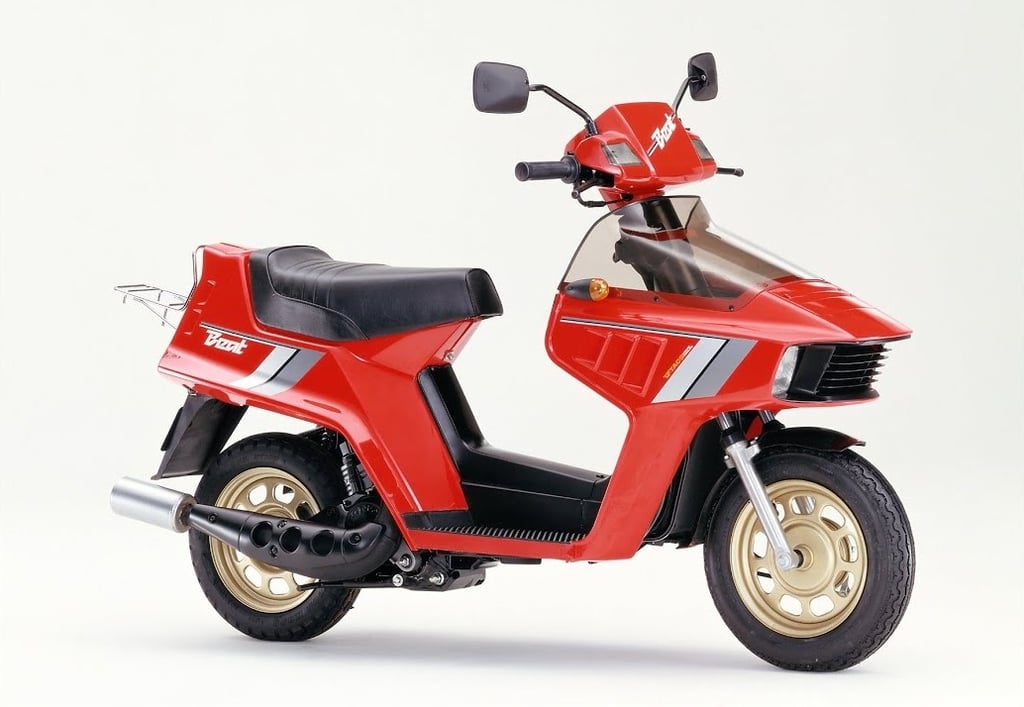Honda FC50: Blending Futuristic Design and Stellar Performance
The Honda FC50, also known as the Honda Beat, is a scooter model that was introduced in 1983 and is still admired today for its blend of style, performance, and innovation. With a liquid-cooled, two-stroke, single-cylinder petrol engine, the Honda FC50 boasts a motor performance that reinforces Honda's prowess in engine technology. Its unique design characteristics, marketing and sales strategy, and cultural and historical significance have made it a beloved figure in the panorama of motorcycling, securing its place in motorcycle history and continuing to excite and inspire riders around the globe.
SCOOTERS HONDA JAPAN 1980'STWO STROKE
11/5/20233 min read


The Honda FC50 - A Journey Through Legacy and Performance
Introduction
The Honda FC50, known among enthusiasts as the Honda Beat, is a remarkable figure in the landscape of motorcycling. Introduced in 1983 by the renowned manufacturer Honda, this scooter model radiates an allure that has not faded with time. Often lauded as an icon in its domain, the Honda FC50's blend of style, performance, and innovation continues to be the subject of considerable admiration.
Historical Context
The year 1983 marked a significant milestone in Honda's history with the launch of the FC50, also recognized by the emblematic name, the Honda Beat. This period witnessed numerous transformations within the motorcycle industry, characterized by increasing competition and a fervor for innovation and refinement. Amid these dynamic market conditions, the debut of the Honda FC50 was particularly notable. The scooter not only responded to the emerging requirements of the market but also set a new standard in its segment.
Design and Specifications
Embodying Honda's dedication to craftsmanship and aesthetics, the FC50 exhibited a captivating design that instantly set it apart. Available in a palette of red, black, and white, its body style embodied a classic appeal that was complemented by its unique design characteristics. When it came to the specifications, the Honda FC50 was nothing short of impressive. It housed a liquid-cooled, two-stroke, single-cylinder petrol engine with a capacity of 48 cc, delivering a power output of 7.2 PS. Balancing the compelling engine specifications was its weight, dry at 60 kg and wet at 65 kg, contributing to its remarkable handling.
Engine and Performance
Underneath its sleek exterior, the Honda FC50 boasts a motor performance that reinforces Honda's prowess in engine technology. Its core comprised a single-cylinder two-stroke engine that used liquid cooling to leverage power—ranking it as one of the most potent contenders in its segment at the time. With a small radiator nestled between the twin headlights, the FC50 offered an automatic centrifugal clutch that engages from 3000 rpm and its CVT (Continuously Variable Transmission) adjusts from low to high around 5500 rpm. Adding to its performance credo was the V-TACS system activated through a lever via the rider's left heel. This system increased power from 5500 rpm, contributing to a top speed approximately at 60 km/h measured at 11,000 rpm.
Marketing and Sales
Beyond its technical attributes, the Honda FC50's appeal was heightened by the strategic marketing and robust sales figures associated with its launch. Though primarily produced for the domestic market in Japan, the FC50 saw a significant export to various parts of the world, making it a globally recognized model. Yet, its unique characteristics and limited production schedule rendered it a rare and sought-after scooter. Its introduction added a new facet to Honda's illustrious reputation, fortifying the brand's prominent standing in the market.
Reception and Reviews
The Honda FC50's reception among users and reviewers alike echoed a resounding note of appreciation. Owners lauded the scooter for its potent performance features and its engaging ride experience. The innovative V-TACS system drew specific attention, offering enhanced power distribution that riders found exhilarating. The scooter performed efficiently in real-world scenarios, further cementing its place in the hearts of its riders.
Legacy and Collectibility
Over the years, the Honda FC50 has truly earned its collector's status, appealing to enthusiasts with its compelling history, charismatic design, and remarkable performance capabilities. Even though primarily crafted for the Japanese home market, its limited models were exported to various nations, spreading its charm far and wide. The enduring legacy of the Honda FC50 stands as a testament to its impact on the motorcycle industry and its eternal appeal to riders.
Cultural and Historical Significance
In the realm of culture and history, the Honda FC50 occupies an intriguing niche. Its unique characteristics and distinctive performance capabilities have made it a famed figure among motorcycle enthusiasts. Particularly in motorcycling subcultures, the Honda FC50 is seen as a symbol of distinction, embodying a blend of technical ingenuity and timeless aesthetic appeal. Its presence over time in varied nations underscores its diverse cultural significance.
Conclusion
As we conclude this excursion through the captivating aspects of the Honda FC50, it becomes abundantly clear why this scooter has secured such a beloved place in the panorama of motorcycling. From its striking design flair and technical competence to its impactful history and cultural resonance, the Honda FC50's impact is undeniably profound. A landmark model that defied its era, the Honda FC50, remains a cherished figure in motorcycle history, continuing to excite and inspire riders around the globe. Truly, the enduring appeal and charm of the Honda FC50, also known as the Honda Beat, keep it eternally present in the heartbeat of the motorcycling world.
